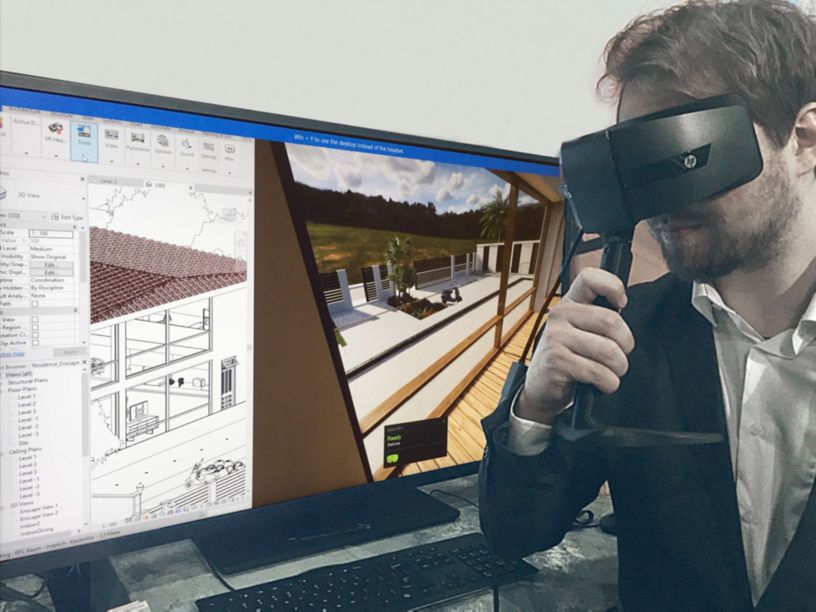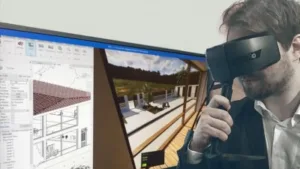This Display Daily article is not about new display related hardware or a new display application. Rather, it relates to the use of familiar display hardware in applications in which such hardware is already commonly used. The incentive for this article is to report on news of an innovative way in which the displays can be used in such applications.

The starting point for the article is the Autodesk University Conference recently held in Las Vegas. At the conference, HP Labs (Palo Alto), the R&D part of HP, unveiled a working prototype of a device called Opera Glass. It is represented as a “standby VR headset designed to live on a desk.” The hardware is intended to enable what the company calls “VR snacking.”
The prototype Opera Glass was shown at the Autodesk University Conference and is illustrated below.
 The HP Opera Glass as shown at the Autodesk University Conference.
The HP Opera Glass as shown at the Autodesk University Conference.
Opera Glass is intended to solve a problem that HP represents as common in applications that require highly focused attention such as engineering, architecture and product design. More specifically, “when CAD is used on a desktop, designers frequently find it necessary to switch from a primary display to a simulated 3D display.” As a practical matter, switching from a desk top monitor to a VR headset can require several seconds for the user to fit the headset onto their head. The reason why any delay can be significant derives from the fact that, when a designer is fully engaged in their work, any delay can interfere with concentration and disrupt the creative process. HP thinks Opera Glass can help address this problem.
The Opera Glass solution consists of a conventional HP Windows Mixed Reality headset mounted on top of a desk stand. It is intended that the VR view run at the same time as the desktop view. According to a HP Labs statement, Opera Glass will enable a user seated or standing at a desk to easily and, thus, quickly switch between the primary display and the VR headset. By use of this means, a designer is able to check out a 3D virtual image with little interruption in concentration or workflow.
“The solution can be thought of as similar to having a dual monitor setup – only the VR headset functions as the second monitor.”
The act of taking a quick look, that is, taking a little “bite” of virtual reality for design purposes, is HP’s definition of ‘VR snacking’.
In addition to VR snacking, the proposed configuration should enable designers to quickly share their work with a collaborator thus enabling real time feedback. In fact, it should be possible to configure a system to support multiple Opera Glass VR headsets thus allowing multiple collaborators.
At this time, HP has not published any plan to turn Opera Glass into a product.
In closing, I would like to note that I haven’t had occasion to engage in design work using a primary monitor in conjunction with a VR headset. As I result, I don’t have any hands on experience upon which to base an opinion on the utility of the approach proposed by HP. Any Display Daily readers having such experience are invited to express their opinion on the HP approach by posting a comment to this article. -Arthur Berman

